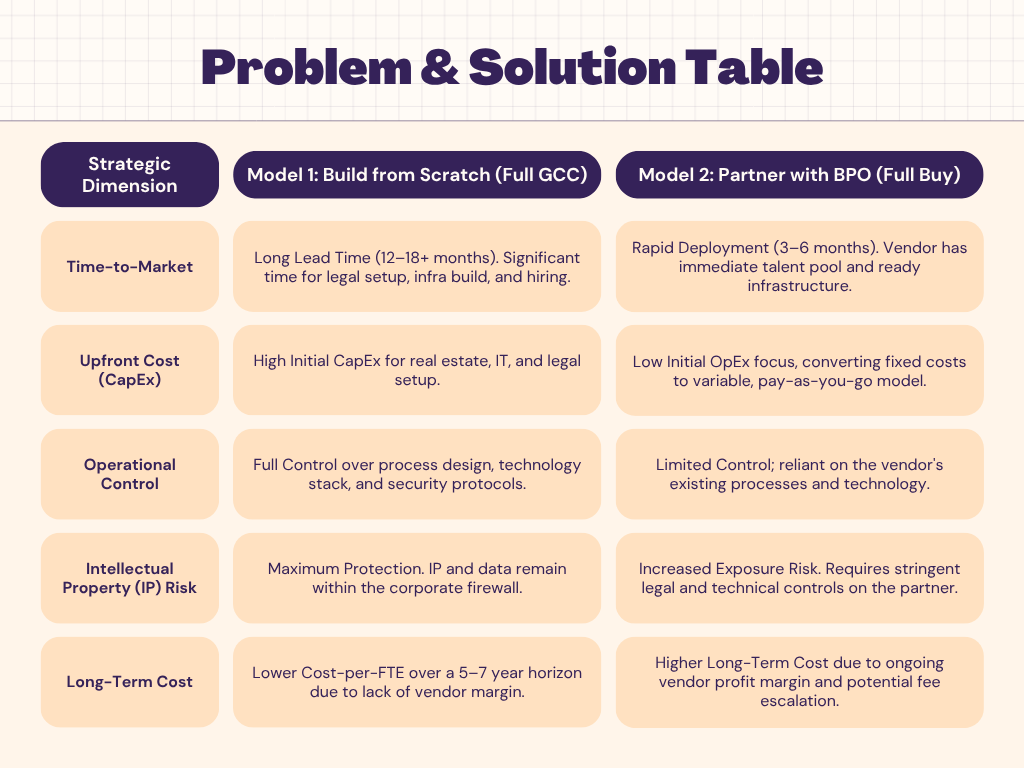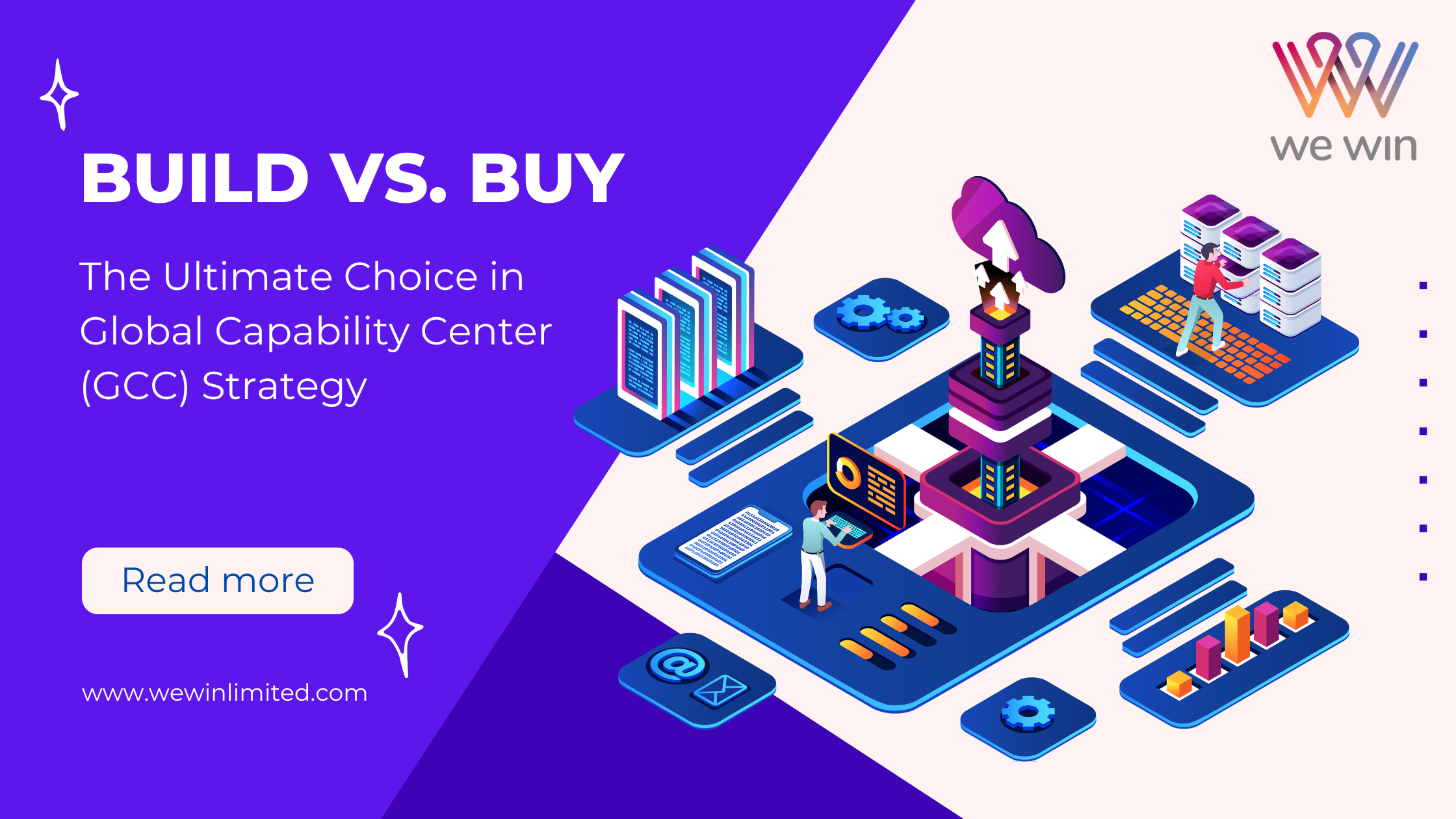“Did you know that despite the allure of complete control, nearly 65% of large enterprises underestimate the time-to-value for a self-built Global Capability Center (GCC) by over a year? This delay means millions in unrealized savings and lost market opportunities. The core question for global executives today is: How do you accelerate value realization without sacrificing strategic control?”
The decision of establishing a Global Capability Center (GCC) is no longer about simple cost arbitrage; it's about speed-to-market, long-term talent strategy, and protecting your intellectual property. This framework will help you navigate the foundational choice: Build from scratch (full GCC) or Partner with a BPO (outsourcing).
I. Defining the Strategic Landscape
- Global Capability Center (GCC): A wholly-owned subsidiary providing centralized shared services, R&D, or knowledge-intensive activities offshore. The parent company owns the operation, infrastructure, and talent. Its value proposition is Complete Control.
- Business Process Outsourcing (BPO): Partnering with an external vendor to manage specific, often non-core, business functions. Its value proposition is Rapid Scalability and Minimal Upfront Capital.
II. Strategic Comparison: Build vs. Buy Models
This table compares the two pure models across critical strategic dimensions.

III. The Hybrid Model: Speed Meets Strategic Control
The dichotomy of pure "Build" or pure "Buy" is often too rigid for today's dynamic global environment. The solution lies in the Hybrid Model, which combines the speed of partnership with the control of ownership.
- Definition: A strategy where an organization maintains a core, wholly-owned GCC leadership team for strategic functions while leveraging a BPO partner for standardized, high-volume tasks.
- The Strategic Split:
- "Build" Component (GCC Core): Focuses on highly strategic, IP-sensitive, or differentiating activities such as R&D, Core Product Engineering, Data Science, and critical Compliance.
- "Buy" Component (BPO Partnership): Focuses on functions where rapid scalability or cost optimization is key, such as Tier 1 IT Support, Payroll, or Transactional Finance/HR.
IV. The Critical Role of Governance in Partnership
For the Hybrid Model to function effectively, the internal organization must implement robust GCC Governance over the BPO relationship. This is the difference between simple outsourcing and strategic partnership.
- Strategic Oversight: The internal GCC leadership must set the strategic direction, goals, and culture. The BPO partner acts as the executor, ensuring they operate within the client's framework.
- Metric Alignment: Move beyond simple Service Level Agreements (SLAs) to focus on Outcome-Based Metrics (OBMs). Measure the BPO’s performance based on business impact, not just call volume or ticket closure time.
- Risk Mitigation: Maintain control over data security, compliance, and regulatory adherence. A strong governance framework ensures the BPO's operations meet the same global standards as your internal teams, protecting your brand and IP.
V. Conclusion and Call-to-Action
The optimal choice in the global capability landscape is often no longer a singular answer but a flexible, hybrid approach. By strategically outsourcing non-core, high-volume activities to a governed BPO partner and retaining strategic functions within a core GCC team, you achieve an accelerated time-to-value while maintaining the cultural and technical alignment critical for long-term success.
Challenge: Take a critical look at your current offshore needs and identify the two non-negotiable functions that must be built in-house due to their role in competitive advantage or core IP. Use this clarity to define your next expansion strategy.
Comment below with the two non-negotiable functions you identified! Let's discuss how you plan to hybridize your path to success.
.png)
%402x.svg)




